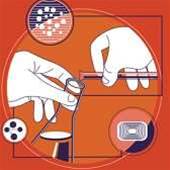
Casimir force, first discovered in 1948 and measured in 1997, is a major problem in nanotechnology, since it causes atomic-sized particles to clump together.
Professor Leonhardt explained: "The Casimir force is the ultimate cause of friction in the nano-world, in particular in some microelectromechanical systems.
"Such systems already play an important role – for example tiny mechanical devices which trigger a car airbag to inflate or those which power tiny 'lab on chip' devices used for drugs testing or chemical analysis. Micro or nano machines could run smoother and with less or no friction at all if one can manipulate the force."
By using a lens to reverse the effect the team were able to keep particles apart, by turning the attractive force into repulsion.
"At the moment, in practice it is only going to be possible for micro-objects with the current technology, since this quantum force is small and acts only at short ranges. For now, human levitation remains the subject of cartoons, fairytales and tales of the paranormal," explained Professor Leonhardt.

_(22).jpg&h=140&w=231&c=1&s=0)






_(26).jpg&w=100&c=1&s=0)

 iTnews Executive Retreat - Security Leaders Edition
iTnews Executive Retreat - Security Leaders Edition










_(1).jpg&h=140&w=231&c=1&s=0)



